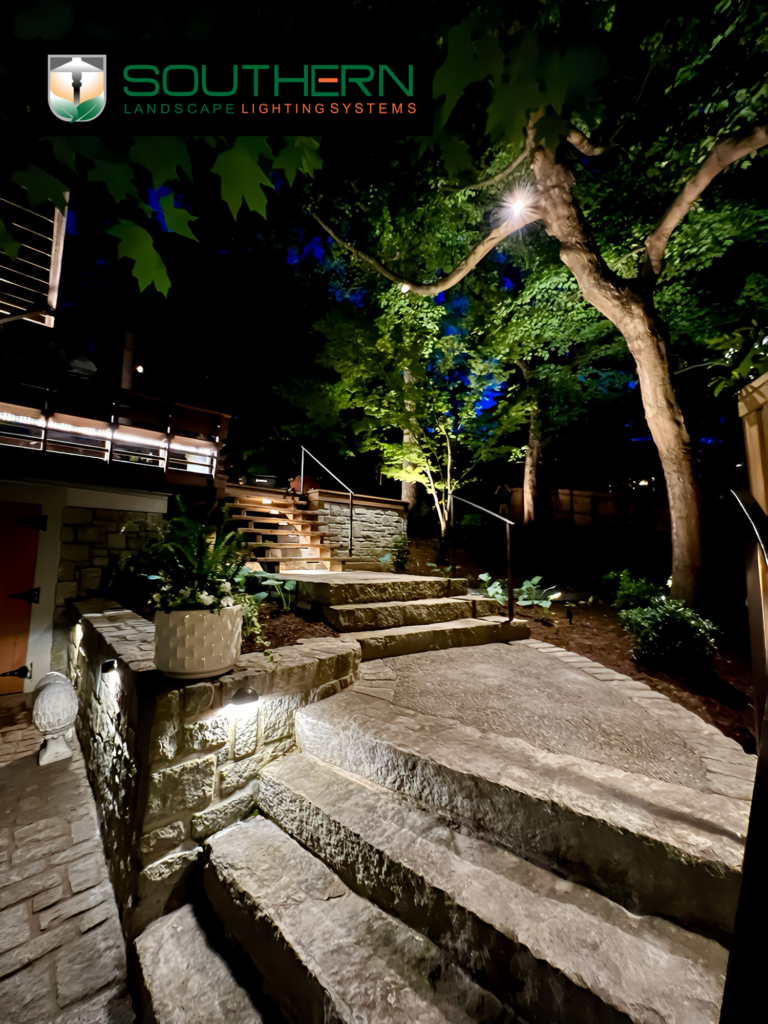With summer right around the corner, it’s a great time to dive into best practices for landscape lighting. We’ve reached out to outdoor lighting designers with years of industry experience to share their best practices for design, installation, and marketing. Today, we’re focusing on best practices for designing beautiful landscape lighting projects, featuring two pros with decades of on-the-job experience.
Shaun Omar is the founder of Outdoor Lighting Experts which services Palm Beach and Broward County in Florida. With over 30 years of landscape lighting experience, we’re excited to share some of his design knowledge with you!

Understand the Fundamentals of Light
For Shaun, a good lighting design has depth, balance, and a visual destination. But how do you successfully incorporate these elements into your own landscape lighting designs? It all starts with understanding the fundamentals of light, including color temperature, beam angles, and lumen levels (and more!). Mastering the fundamentals is essential to good landscape lighting design.
Always Consider Your Surroundings
“Be mindful of your surroundings,” Shaun says. “Are there any street lights? If the neighbors have bright white lights, all of that makes a difference to how your lights look.” Consider the indoor spaces as well. Be careful when placing lights around the outside of a home. For example, while a light underneath a window can have a nice effect on the outside, from the inside, all the family will see is glare of light coming in through the window.
Less is More
When it comes to lighting designs, Shaun believes that less is more. “You don’t have to light up everything,” Shaun says. “Do it tastefully.” His company’s motto, “Paint the night with light,” speaks to the importance of using light both artistically and intentionally. At the end of the day–which is when most of Shaun’s customers come home from their jobs–he wants them to pull into their driveway and enjoy seeing their home or using their backyard long after the sunlight is gone.
Use a Good Product
The final “best practice” Shaun recommends is to use a good product. “Always use a good product. Someone you know you can stand by because they will stand behind you.” Cheap fixtures can be found anywhere and everywhere, but high-quality products will stand the test of time.
Lindsey Rodericks is the co-founder of Southern Landscape Lighting Systems which has offices in Acworth, Marietta, and Alpharetta, Georgia. She and her husband have been in the business for 15 years. Lindsey has a background in stage production where she began to learn the fundamentals of lighting design through working with stage lighting. When it comes to design, Lindsey shares two of her best practices for design:

Listen to Your Client
Since lighting design is artistic, Lindsey’s first best practice is to listen to the customer. “Anything artistic-wise is subjective… If I’ve delivered a design [the client is] happy with, I’ve done my job well.” Part of listening to your clients involves making sure you’re speaking the same language. “Show them pictures of what you think they’re talking about,” Lindsey says. Most customers are not familiar with landscape lighting terms and using pictures can help reduce confusion.
Don’t be Afraid to Mix it Up
For Lindsey’s second “best practice” for design, she encourages designers to mix up and down lighting as well as color temperatures. “Some [designers] get stuck in a rut,” Lindsey says.
“A blend will meet them halfways and still deliver a great design for their portfolio.” Blending color temperatures is another way to add depth to a lighting design. When you introduce different color temperatures into a design, it can complement the warmth or coolness of the house and landscaping “It gives it a nice pop,” Lindsey says.
Thank you again to Lindsey Rodericks and Shaun Omar for their input on best practices for landscape lighting design. Next month, we’ll be sharing some more insights on best practices for installing landscape lighting systems.